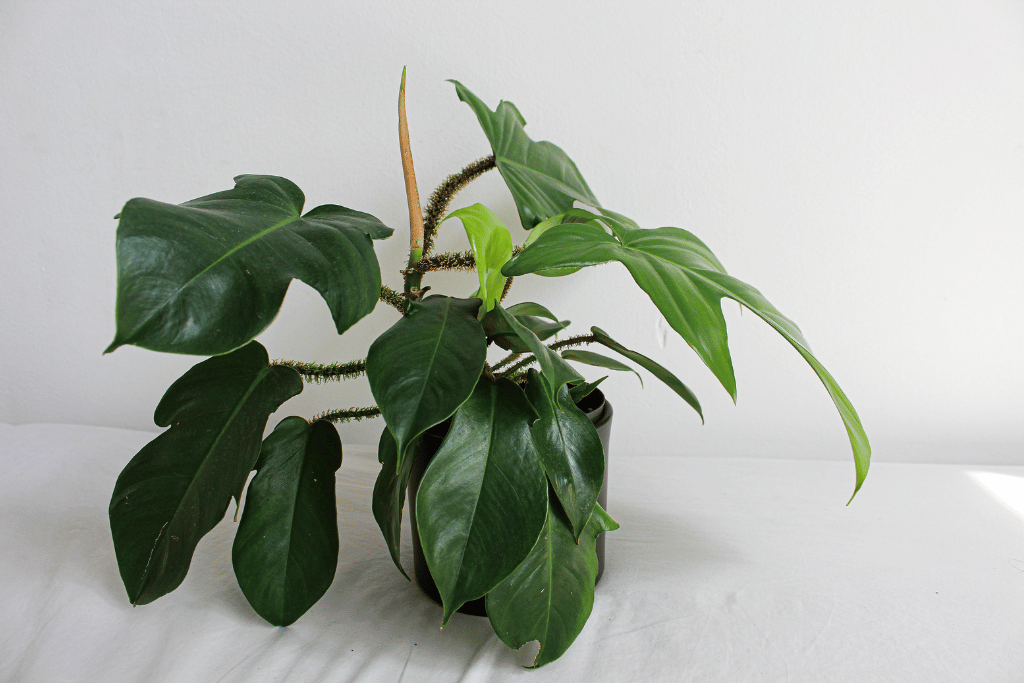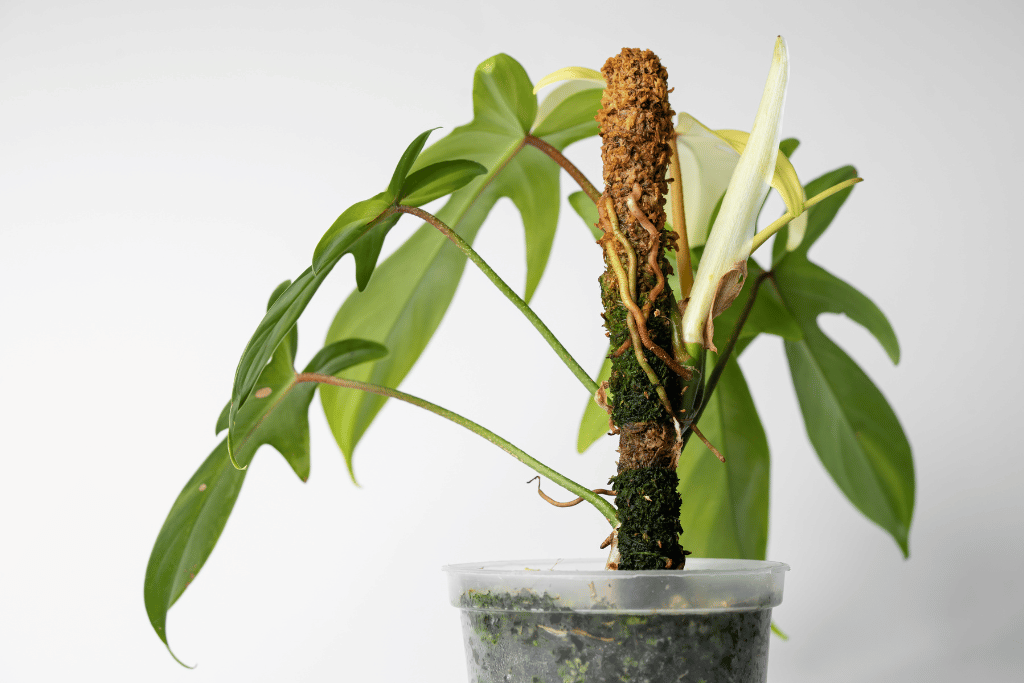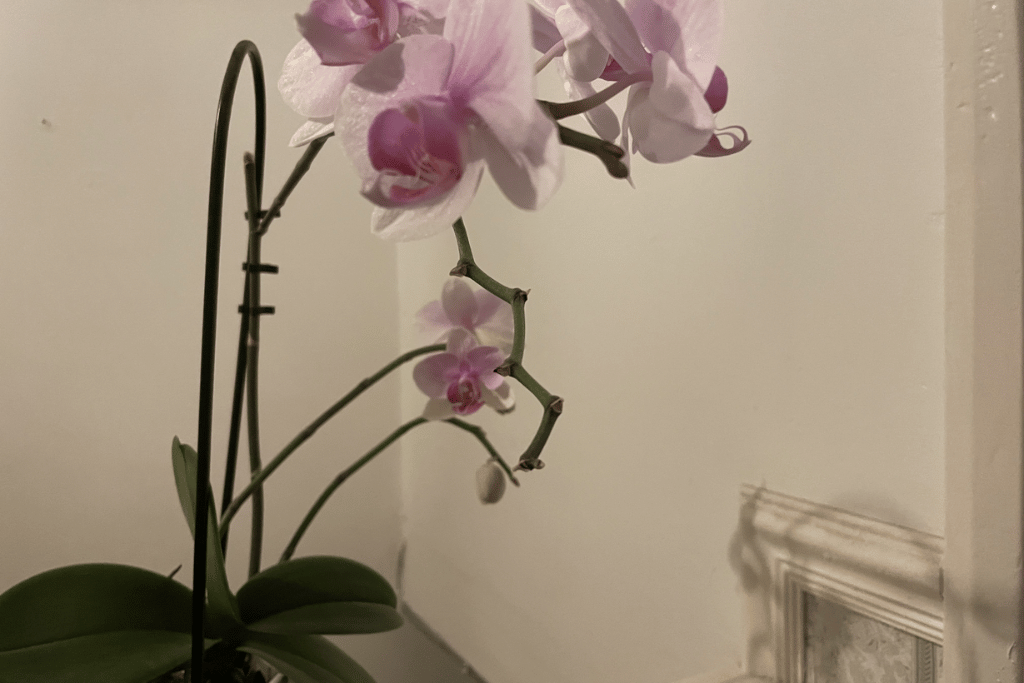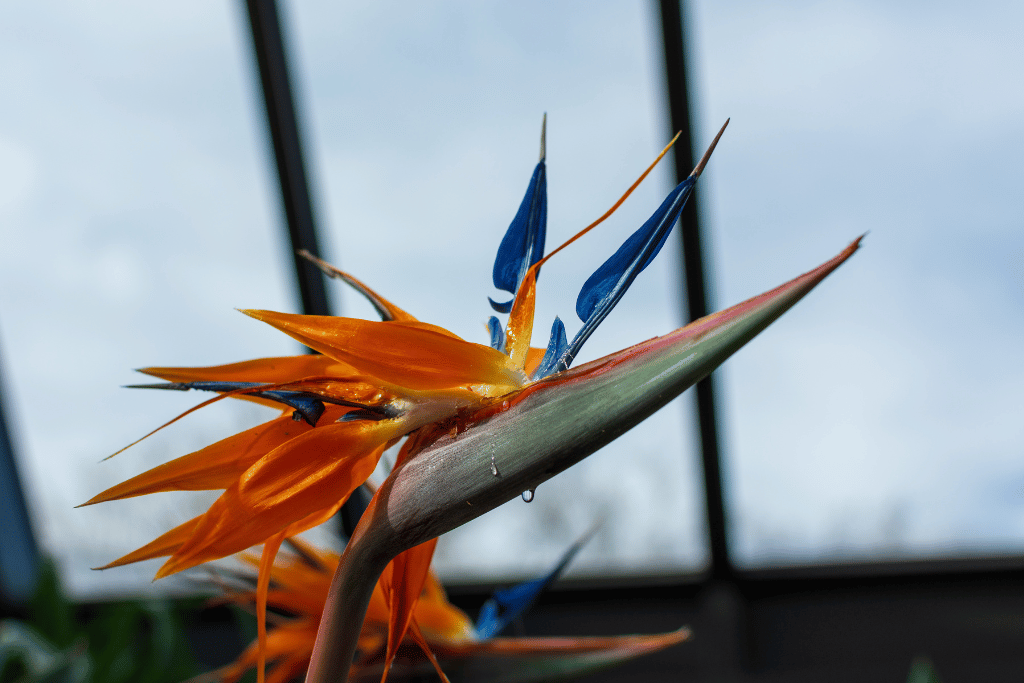
If you want to add a unique and eye-catching plant to your indoor garden, look no further than the Hairy or Red-bristle Philodendron, Philodendron squamiferum. As a house-plant enthusiast myself, I love species that add a pop of color to a room with just their foliage, which is why the purple Oxalis, orange Croton, and red Philodendron squamiferum are some of my favorite species.
As the common name suggests, Red-bristle Philodendron has a distinct and striking appearance with red, hairy stems and wide, deeply lobed leaves. Similar to a Monstera or Pothos, this species can add a tropical touch to any room and is sure to impress any visitors. Although it is a relatively straightforward species to care for, I have learned some valuable tips and tricks through my personal experience and am excited to share them with you here.

Philodendron Squamiferum Care
Like any house plant, knowing how to properly take care of Philodendron squamiferum is essential to your success in growing the species. Luckily, although this variety is rarer than other Philodendrons, it is similar to other species in how easy it is to take care of! A no-fuss plant, once you know what it wants to be happy it will surely wow you with its wonderful tropical foliage.
Sunlight
Philodendron squamiferum wants bright, indirect sunlight, with very little direct sunlight falling on its leaves during the day. Observe the way the sun moves around your house over the course of the day, and avoid any areas where you might find your cat bathing in the sun. Instead, keep your Hairy Philo close to a large window, but just off to the side where it won’t get burned. To keep your plant growing evenly, rotate the pot regularly (about once every week or so) so all sides and leaves are exposed to bright light at some point.

Water
As a tropical species, Philodendron squamiferum loves water and humidity. Where it is found in the wild, like in parts of Brazil, it is actually an epiphytic plant, meaning aerial roots allow it to grow up the side of trees in the rainforest. This means this species will often absorb water from the air and may only be partially rooted in the soil. Because of this, Philodendron squamiferum is sensitive to overwatering and should be watered only about once a week. This can be reduced further to once every 12-14 days in the winter or off-season, depending on the humidity in your home.

Soil
Philodendron squamiferum wants soil that is both well-draining and water-retaining, similar to a Monstera soil mix. Water-retaining additives like coco coir or peat moss will help keep your plant happily moist and humid, while well-draining ingredients like sand are essential to avoid the dreaded root rot. This can be a difficult balance to strike, so if you aren’t confident enough to mix up your own soil combination for your plant, stick to a store-bought mix containing high-quality potting mix and additives to improve the quality.

Growth Form
As previously mentioned, Philodendron squamiferum is used to growing up the side of other trees and plants in the wild in order to reach the sunlight above the canopy. Because of this, your plant would benefit from being provided a moss pole or stake covered in a soft material to allow it to latch on with aerial roots. Even without support, this species will reach about 5 to 6 feet in height, so providing it with a pole to grow onto will help give some stability!

Philodendron Squamiferum Propagation
Once your Philodendron squamiferum matures, consider expanding your collection through propagation. Just like the closely related Pothos plant, Philodendrons are very easy to propagate once you know how. Because it is a rarer variety, sharing even a Philodendron squamiferum cutting from your plant can be quite a generous gift for a friend since they will be able to grow their own plant!

Propagation In Water
Simply take a cutting from a healthy leaf or stem of your plant, ensuring at least one leaf node is present on the cutting. Place the bottom of the stem or leaf into a jar of water, making sure it is only partially submerged. Place the jar in a spot with bright, indirect light and refresh the water a few times a week to ensure no bacteria or mold develop. Once roots appear and are about one inch long, transfer your new plant into the soil and take care of it following the tips above!
Propagation In Soil
If you want to skip the step of water propagation, you can plant stem cuttings directly into a pot of soil. After making the cutting, dip it in a rooting hormone to promote root development. Plant the cutting into the soil and mist it regularly to keep it moist, since it won’t have roots to help absorb water from the soil yet. Test if your cutting has established roots by gently tugging on the stem, if it holds in the soil then you have successfully propagated your plant!

Final Philo Advice
While it requires some specific conditions, like well-draining soil, humidity, and bright, indirect light, Philodendron squamiferum is a relatively easy-to-care-for species that is a great addition to any collection. With a little care and attention, this species will thrive and provide tropical interest to your house with its dark green leaves and fuzzy red stems.
Frequently Asked Questions (FAQ)
Does Philodendron squamiferum flower?
Although this species is not well known for having showy flowers, it will produce them under the right growing conditions. The flowers are similar to those of Monstera and will appear if the plant is kept in bright, indirect light with constant watering. This species may be more likely to flower in a greenhouse than inside a house, due to increased humidity.
Why is Philodendron squamiferum hairy?
Philodendron squamiferum is well known as the ‘Hairy Philo’ due to the hairs present on the leaves and stem of the plant. These hairs are an evolutionary feature that allows the plant to retain more moisture by decreasing evaporation. By trapping water in the hairs, the plant creates a humid environment where it can thrive.
Is Philodendron squamiferum rare?
Philodendron squamiferum is one of the rare Philodendron varieties, meaning that you won’t be as likely to find it in your regular plant store. This variety can often be found for sale online or easily propagated if you know someone who already has a plant.
What plant is similar to Philodendron squamiferum?
Other Philodendron species, like P. bipinnatifidum, will share many of the growth forms and overall look of the P. squamiferum species. Other species with similar traits include Monstera deliciosa, Alocasia reginula, and Anthurium clarinervium.



